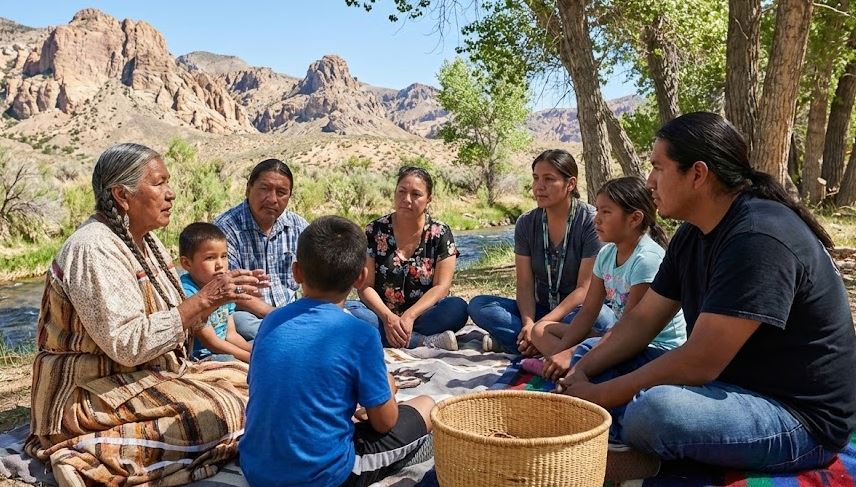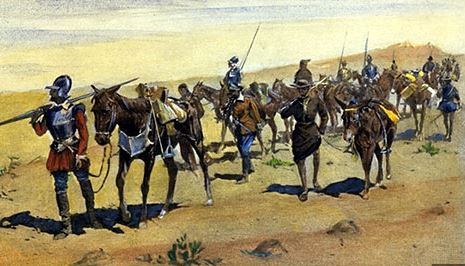Land of Enchantment: New Mexico's Journey from Indigenous Roots to Statehood
New Mexico's identity is a testament to centuries of layered history, where its name, "Nuevo México," is a direct reflection of colonial ambition and cultural misunderstanding. The state’s rich, complex history began long before it became the 47th state to join the Union.
Early Indigenous Roots: The First Names of the Land ?️
Long before European explorers traversed the arid plains, the land now known as New Mexico was shaped by its original inhabitants. Diverse Indigenous groups, including the Pueblo, Navajo, and Apache peoples, maintained thriving, ancient communities. These cultures had their own names for the lands—names steeped in language, tradition, and a deep spiritual connection to the region—which ultimately laid the foundational human and cultural legacy of the area.
Spanish Exploration and the Naming of "Nuevo México"
The Spanish presence began in the 16th century with explorers arriving in search of legendary wealth and resources. Their quest led them into contact with the well-established Pueblo communities. It was this encounter that led to the permanent naming of the region.
The explorers, operating under a significant misconception, believed the Pueblo peoples and the wealth they sought were somehow connected to the highly organized and rich Mexica (Aztec) empire to the south in Central Mexico. This belief led the Spanish to apply the name "Nuevo México" (New Mexico) to the vast, largely unexplored region north of the Rio Grande River.
The name "New Mexico" persisted, even though the region's diverse indigenous cultures were distinct from the Mexica and the legendary riches the Spanish sought never materialized. The name stuck, permanently reflecting the deep Spanish influence and their grand, if mistaken, aspirations for colonization.
Shifts in Political Control: From Empire to Republic
The political identity of the region transitioned significantly over the next two centuries:
-
Mexican Territory (1821–1848): After Mexico successfully gained independence from Spain in 1821, New Mexico became a vast Mexican territory. This period fostered increased trade, notably along the Santa Fe Trail, and cultural exchange with other parts of the newly formed Mexican Republic. However, it was also marked by deep tensions and revolts between the Mexican government and the local populations, including the resilient Pueblo people.
-
American Territory (1848): The geopolitical landscape was drastically redrawn in 1848. Following the Mexican-American War, New Mexico was formally ceded to the United States as part of the Treaty of Guadalupe Hidalgo. It became a U.S. territory, immediately experiencing a new wave of Anglo-American settlement, military presence, and cultural influence that profoundly reshaped the region's future.
The Long and Arduous Path to Statehood
New Mexico’s path to becoming an official state was exceptionally long and arduous, lasting over six decades and fraught with political debates and challenges in Washington D.C. The territory's unique and densely woven blend of Hispanic, Native American, and Anglo-American cultures made it difficult for Congress to fit it neatly into the existing statehood framework. Debates over language, land rights, and political representation continually postponed its entry.
After decades of determined struggle and advocacy by its diverse population, New Mexico finally achieved statehood on January 6, 1912, becoming the 47th state to join the American Union. Despite its origin in a 16th-century colonial misunderstanding, the name "New Mexico" was retained, and today, it serves as an enduring symbol of the state's diverse heritage, its unique tri-cultural blend, and its long, persistent journey into the modern era.
 Today, New Mexico is a vibrant state with a rich cultural tapestry where ancient traditions and modern influences coexist. Its history as a land of many names is a testament to the resilience and adaptability of its people, who have navigated through centuries of change while preserving their unique identity.
Today, New Mexico is a vibrant state with a rich cultural tapestry where ancient traditions and modern influences coexist. Its history as a land of many names is a testament to the resilience and adaptability of its people, who have navigated through centuries of change while preserving their unique identity.



